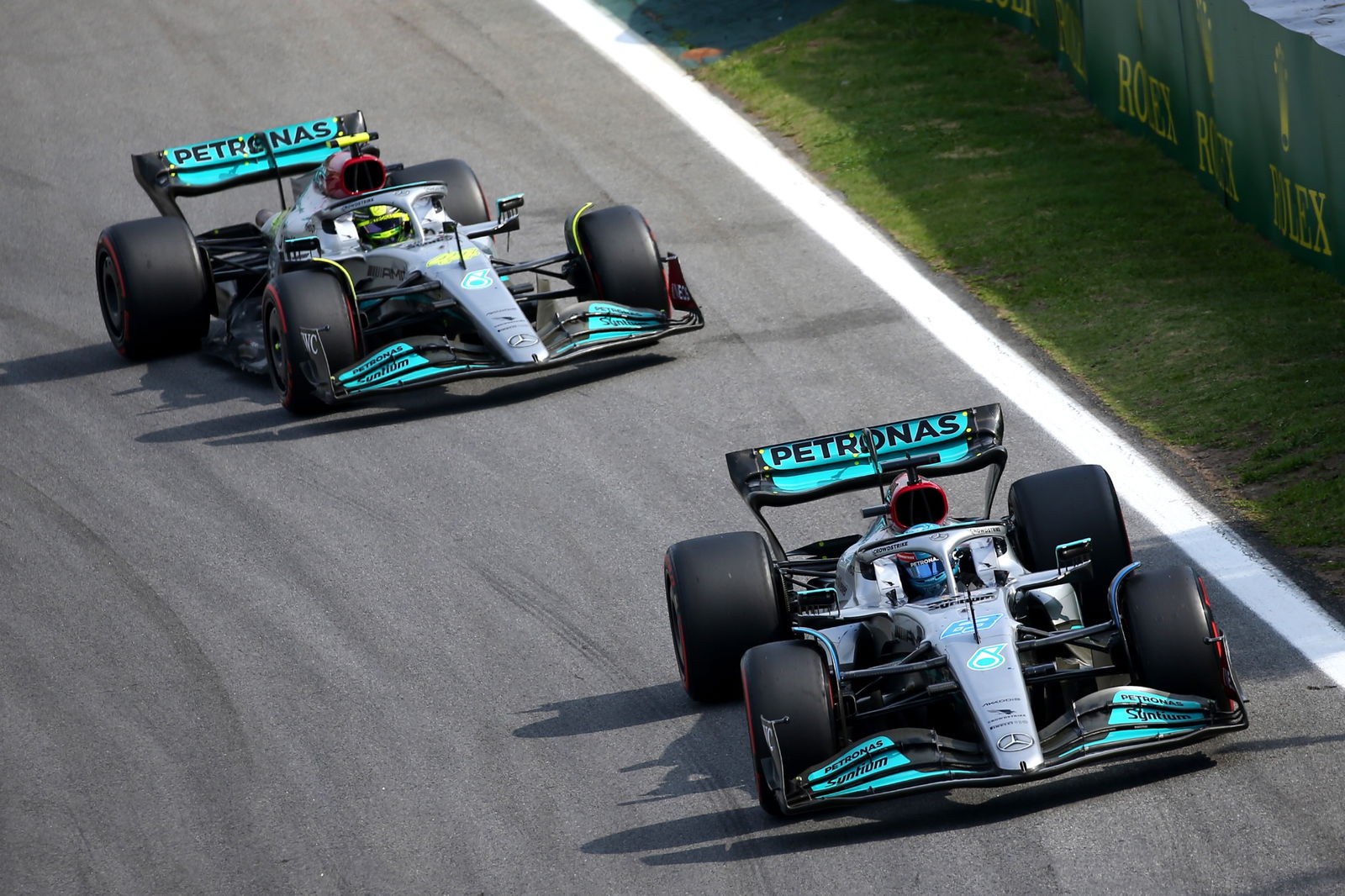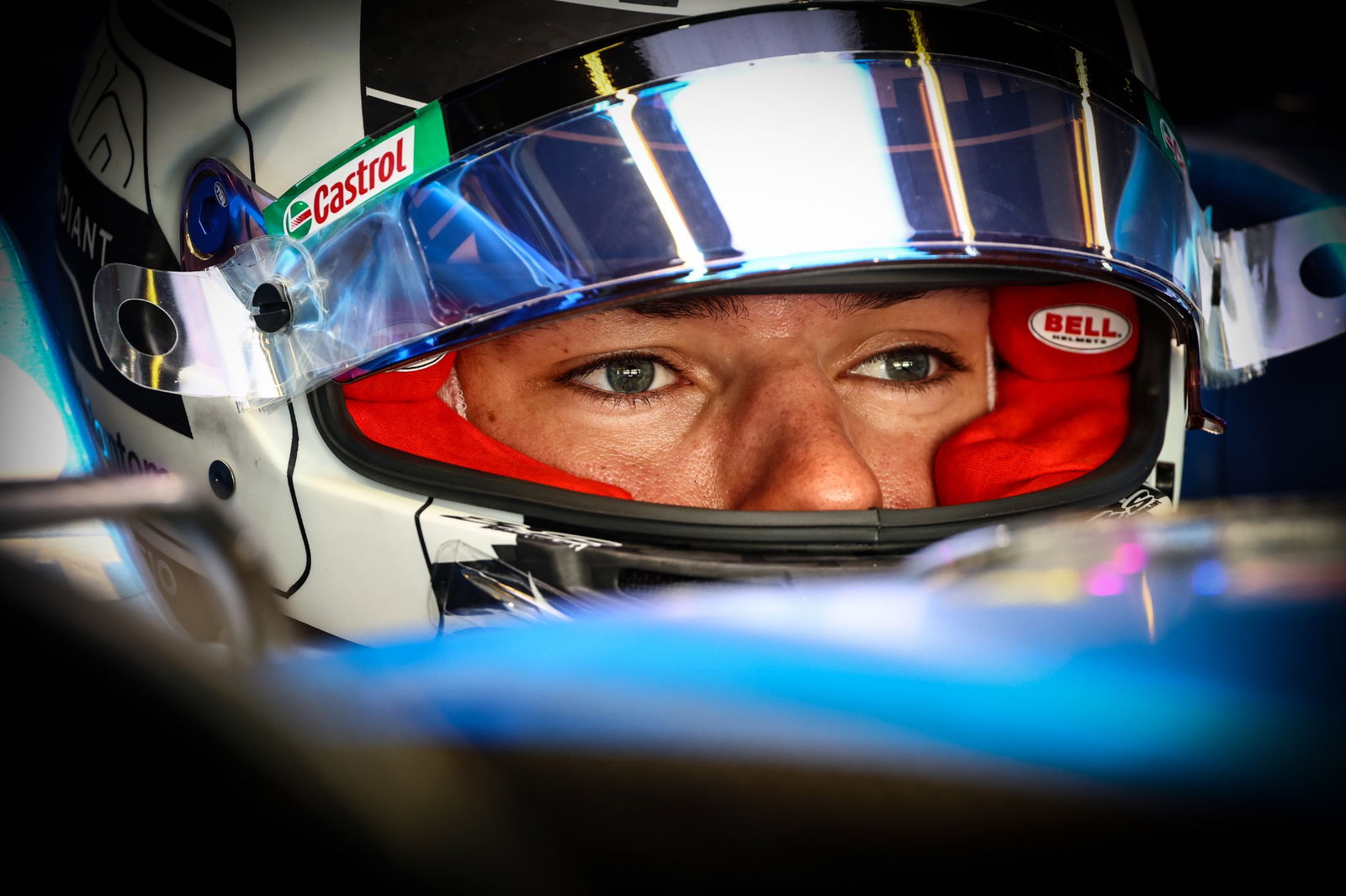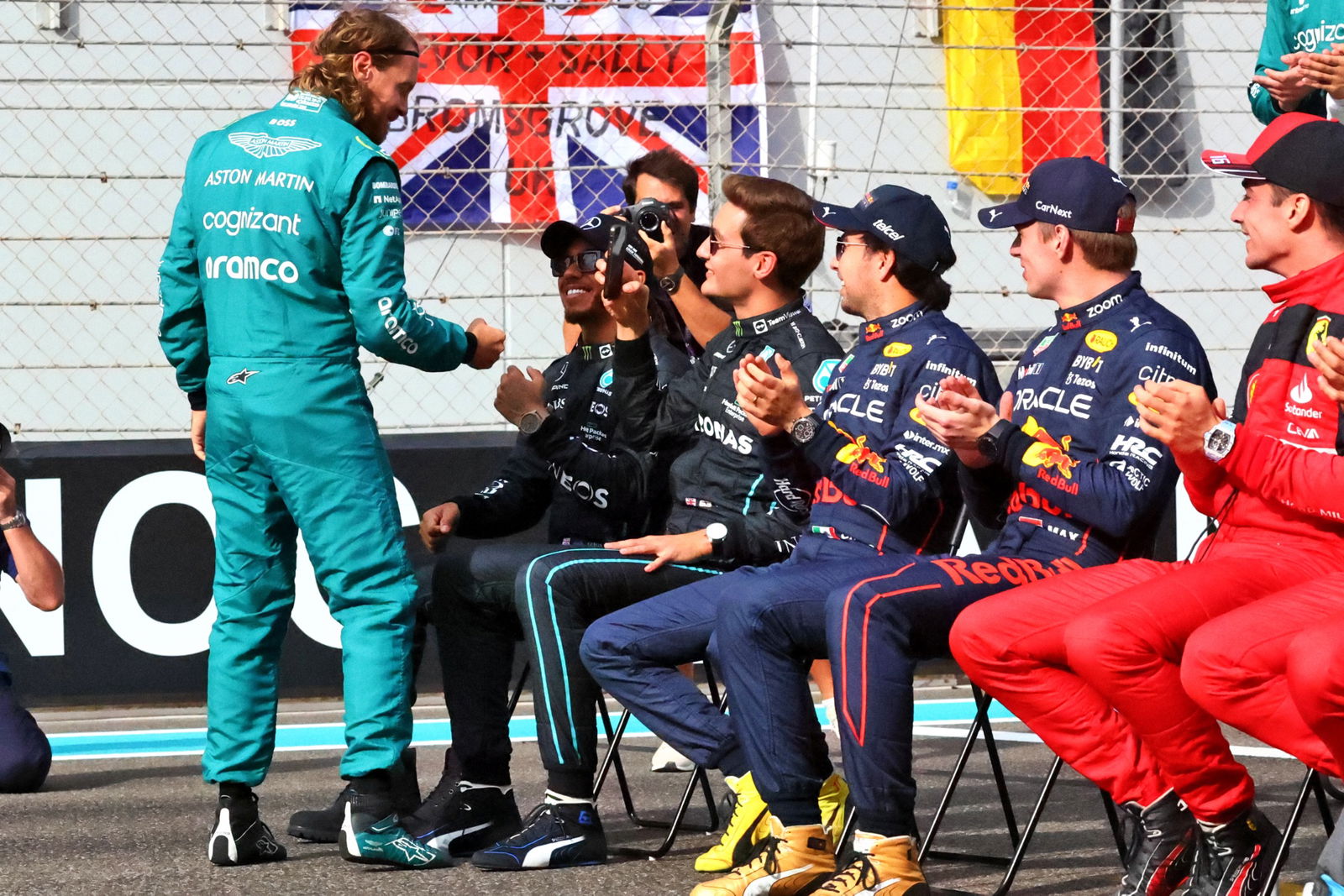Mercedes used ‘table of doom’ to predict W13 performance across F1 2022

Failure to grasp a major overhaul to F1’s technical regulations left Mercedes facing a challenging campaign, with the German manufacturer seeing their streak of success come to an end in 2022.
Mercedes started the year on the back foot compared to rivals Red Bull and Ferrari and their troubled W13 challenger only looked genuinely competitive at certain tracks.
- Hamilton makes F1 2023 vow: 'We'll be back. I'll be back.'
- Wolff: F1 2022 less painful than controversial 2021 title loss
At most venues, Mercedes were only the third-fastest team, but George Russell led Lewis Hamilton in a 1-2 as the team claimed their only victory of the season in Brazil.
While improvements were made as the year progressed, Mercedes slipped back to their usual level of performance at the season-ending Abu Dhabi Grand Prix.
Following a difficult qualifying at Yas Marina, Mercedes boss Toto Wolff revealed the amusing name behind the team’s tool to predict how well their W13 would fare at each track.
“We always knew that we need to be prudent and not set our expectations based on the Brazil result,” he told media including Crash.net on Saturday.
“I think that circuit perfectly suited our car and everything ran very, very smoothly. And Abu Dhabi in our ‘table of doom’ was one of the worst tracks - not catastrophic like the high-speed tracks, but still not ideal.”

Speaking in a post-race debrief video from Abu Dhabi, Mercedes chief strategist James Vowles further explained the team’s ‘table of doom’.
“This is something that we have constructed internally that allows us to somewhat predict where our car will be relative to certainly the fastest cars track on track and it worked fairly well,” he said.
“It’s something that actually had fairly good correlation across the season and it did say that in for example Mexico and Brazil we would be significantly more competitive than we were going to be in Abu Dhabi.
“It's a function of the properties that make our car both strong and weak and that transpired to be true and as perhaps negative as it comes across that's a very good thing because it means that the properties of our car that we understand we actually have a good grasp on them sufficiently so that they actually look to be real in real life and then the reasons behind it look to be correlated.”
Vowles said Mercedes understand why they fell behind Red Bull and Ferrari in Abu Dhabi, despite dominating in Brazil just one week earlier.
“Part of it is that I think Ferrari moved backwards across Mexico and Brazil, hard to explain why, but they definitely weren’t as competitive there as they were towards the end of the season in Abu Dhabi,” he explained. “They were a fierce rival in Abu Dhabi, very, very quick on the straight line and competitive overall with good tyre degradation.
“That doesn’t obviously explain Red Bull and why we moved back to them, but I think that is explained in the properties of where our car is weak and where it is strong and Brazil had a lot of cornering sequences, types of corners, speeds of corner that really suit the characteristics of our car which unfortunately we didn’t have in Abu Dhabi.
“The final one is Abu Dhabi is very, very cool conditions once we were really racing at night and we saw a few properties on the tyre a little bit of graining appearing on the front axle and on the rear axle and that for sure hurt us in the race.”


